Most people have never heard of green lacewings, but chances are—if you grow flowers in your garden—you’ve probably got a few of them lurking.
Green lacewings (also called golden-eyed lacewings or Chrysoperla carnea, the most common species of lacewing found in the United States) are the good guys you want to have on your side. These beneficial insects are ravenous aphid destroyers when young, and efficient pollinators as adults.
Like hoverflies (my other favorite predatory bugs), lacewings pull double-duty in the garden from spring through fall. They’re a highly effective form of biological pest control and an easy one to attract and keep around—far easier and more productive than ladybugs, in fact.
Look for the eggs
The first telltale signs of a lacewing presence in your yard are their distinctive eggs. I start finding these luminous specks on my vegetables and flowers in early summer and they’re unmistakable: pale, tiny eggs suspended on centimeter-long filaments that are attached to leaves or stems.

The way these eggs are laid should give you a clue as to why lacewings are so valuable in an organic garden: they’ll eat nearly anything in their path.
Lacewings have voracious appetites
So voracious, in fact, that not only will they consume copious amounts of aphids and other pests, they’ll even cannibalize their siblings the moment they hatch! But with each egg dangling on the end of a line, the hatchlings are more likely to stroll right past and move on to your most troublesome pests.
Lacewing larvae are exclusively predatory and have a particular appetite for aphids, devouring up to 600 aphids before they pupate (an impressive feat that’s earned them the nickname of “aphid lions”).
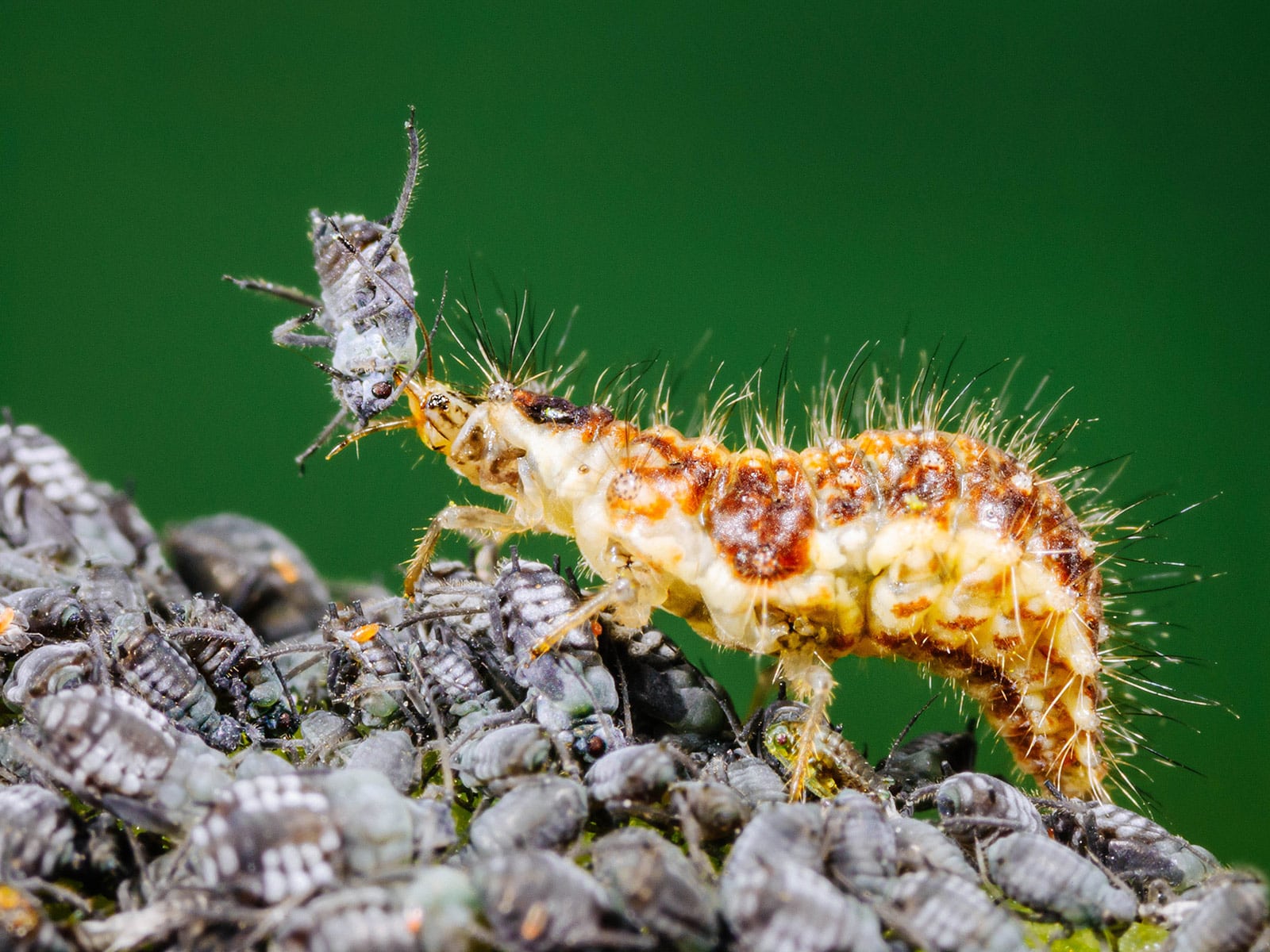
They don’t discriminate though; lacewing larvae are also fond of other slow-moving, soft-bodied insects like mealybugs, scales, thrips, whiteflies, spider mites, leafhopper nymphs, corn earworms, asparagus beetle larvae, Colorado potato beetle larvae, and even young caterpillars (such as cabbageworms and tomato hornworms).
They’ll even attack the eggs of most pests (including caterpillar eggs) and if their prey aren’t too fast-moving or hard-bodied, lacewing larvae will attack adult pests as well.
Though they’re barely an inch long, lacewings look rather intimidating when you get up close—almost like tiny prehistoric crocodiles with their pincers and piercing, sucking mouthparts. They vigorously attack their prey by impaling them with their mouthparts, injecting a paralyzing secretion and then drawing out the bodily fluids of their helpless victims.
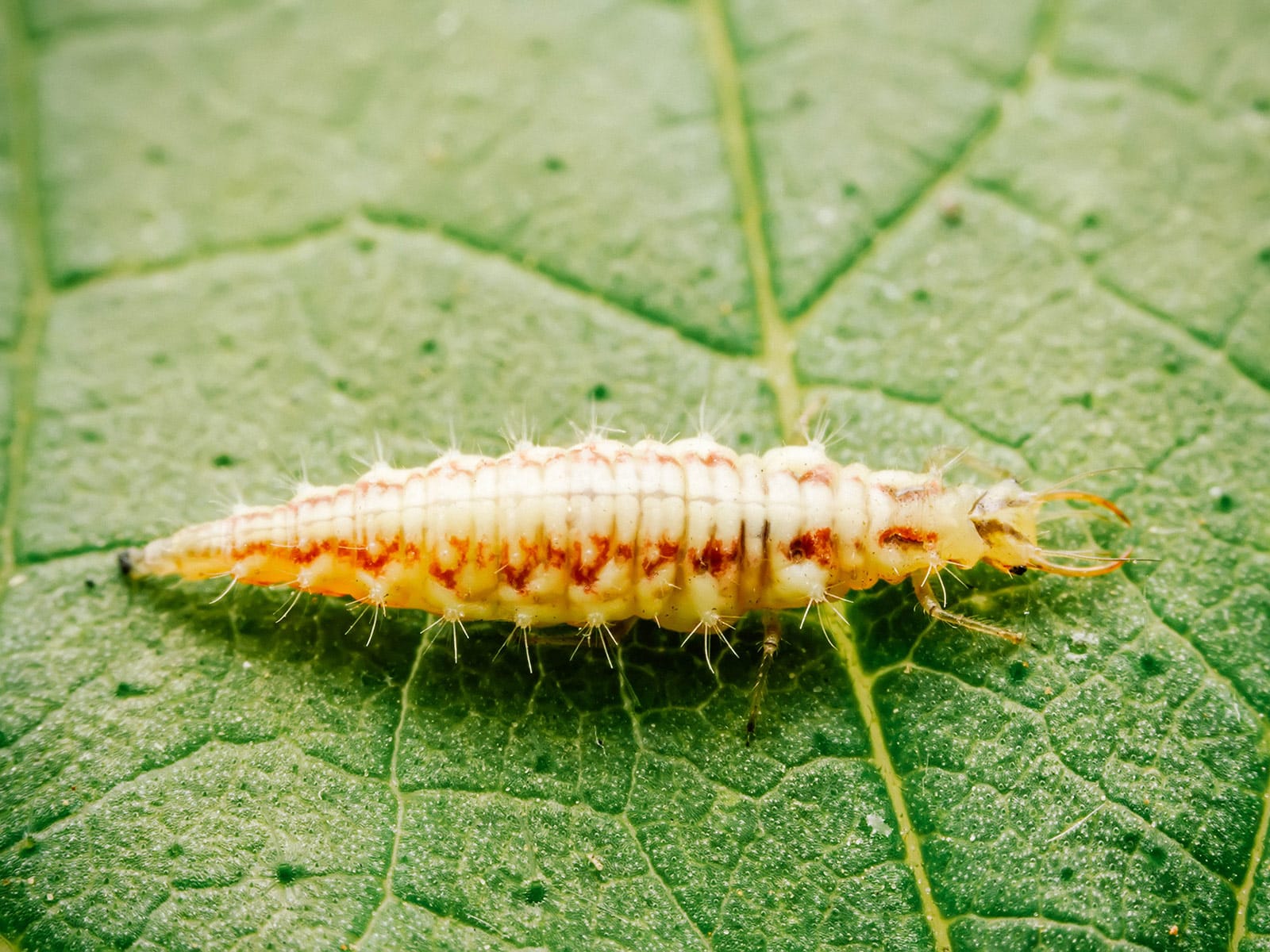

During their larval stage, lacewings do an exceptional job of reducing pest populations on most plants, except those that are particularly sticky (like Calendula) or hairy (like Tithonia).
Despite how aggressive they are, their diminutive size obviously makes them an easy target—which is why their other nickname of “junk bugs” is so fitting. To camouflage themselves against their own predators, lacewing larvae will pick up lichen, moss, plant debris, and the carcasses of their prey and stick them onto their backs.
Total brutes, right?!
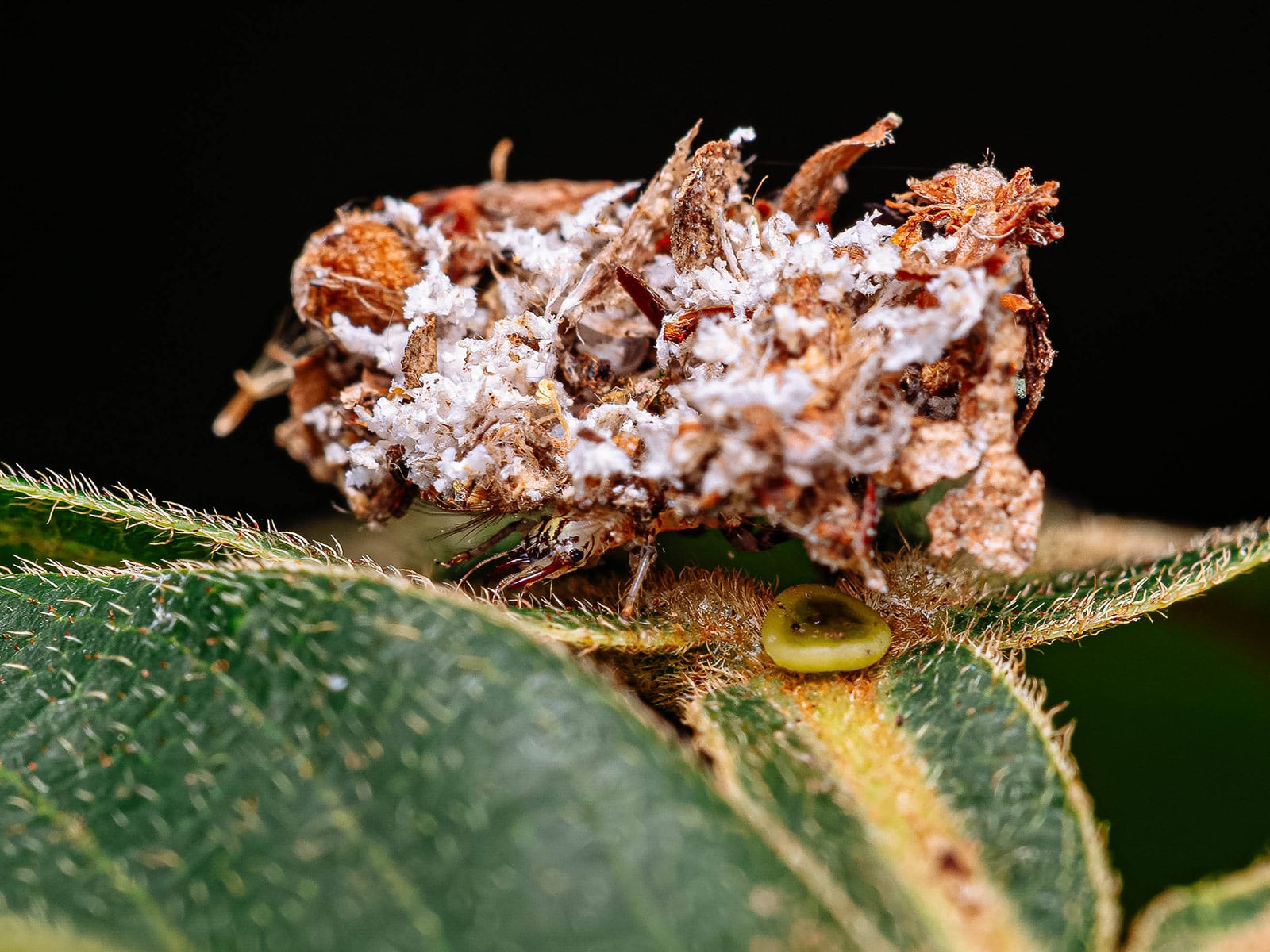
Carrying all this “junk” around hides their bodies and makes it harder for their enemies to recognize them. But if you look carefully in places where you suspect lacewing activity and see small mounds of debris moving across leaves, they very well might be lacewings.
Four generations per year means plenty of predators
After two to three weeks of feasting, the larvae pupate on plant surfaces or under loose bark before emerging as adults.
Lacewings are easily identified by their thin, lime green bodies (up to 3/4 inch long), finely-veined translucent wings, and golden eyes. Even then, it’s somewhat rare to see one on your plants because lacewings are nocturnal and come out at night to hunt. (Like moths and other nocturnal insects, they’re often drawn to light so you may find them on your lanterns.)
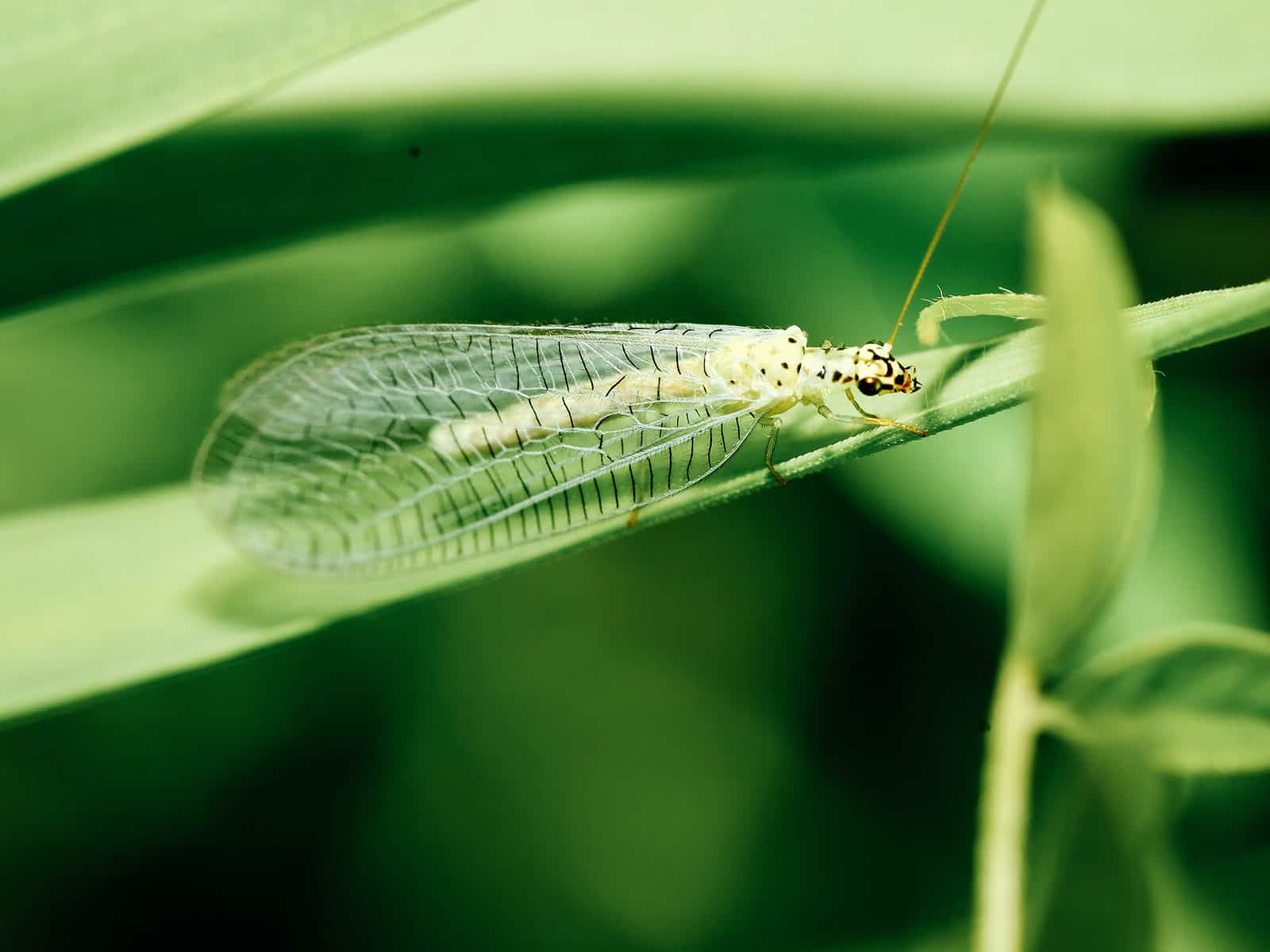
While some lacewing species are predatory, other species feed strictly on nectar, pollen, and aphid honeydew (the sticky, sugary excrement produced by aphids). As a female lacewing goes from flower to flower, she sniffs out the honeydew (a sign of available food nearby for her offspring) before choosing an appropriate site to lay.
Once a female lacewing finds an appropriate site, she begins to lay eggs—up to 300 in her short lifespan. (That’s a lot of awesome predatory bugs when you multiply that by how many aphids they can eat!)
Typically the eggs are laid singly or in small groups near a burgeoning aphid colony so the larvae don’t need to go far in search of food. Many of them have a good chance of surviving since being in mid-air helps keep them out of reach of other hungry insects.

The eggs hatch in three to six days and the larvae spend a couple of weeks chowing down on your garden pests. They’re generalist predators, so while they’re known as aphid lions, they’ll eat pretty much anything they can sink their mouthparts into.
In the absence of aphids and other insects, lacewing larvae become hostile and turn to cannibalism—so maintaining a natural balance in your garden is important.
They then pupate, grow into adults, and the cycle starts all over again. In the Pacific Northwest where I live, there can be three to four generations of lacewings per year.
Lacewings are weak fliers (and that’s a good thing)
Lacewings play an important role in pollination since the adults feed primarily on nectar and pollen, but they’re actually weak fliers—and that’s a good thing, because it means they’re more likely to stay in your garden.
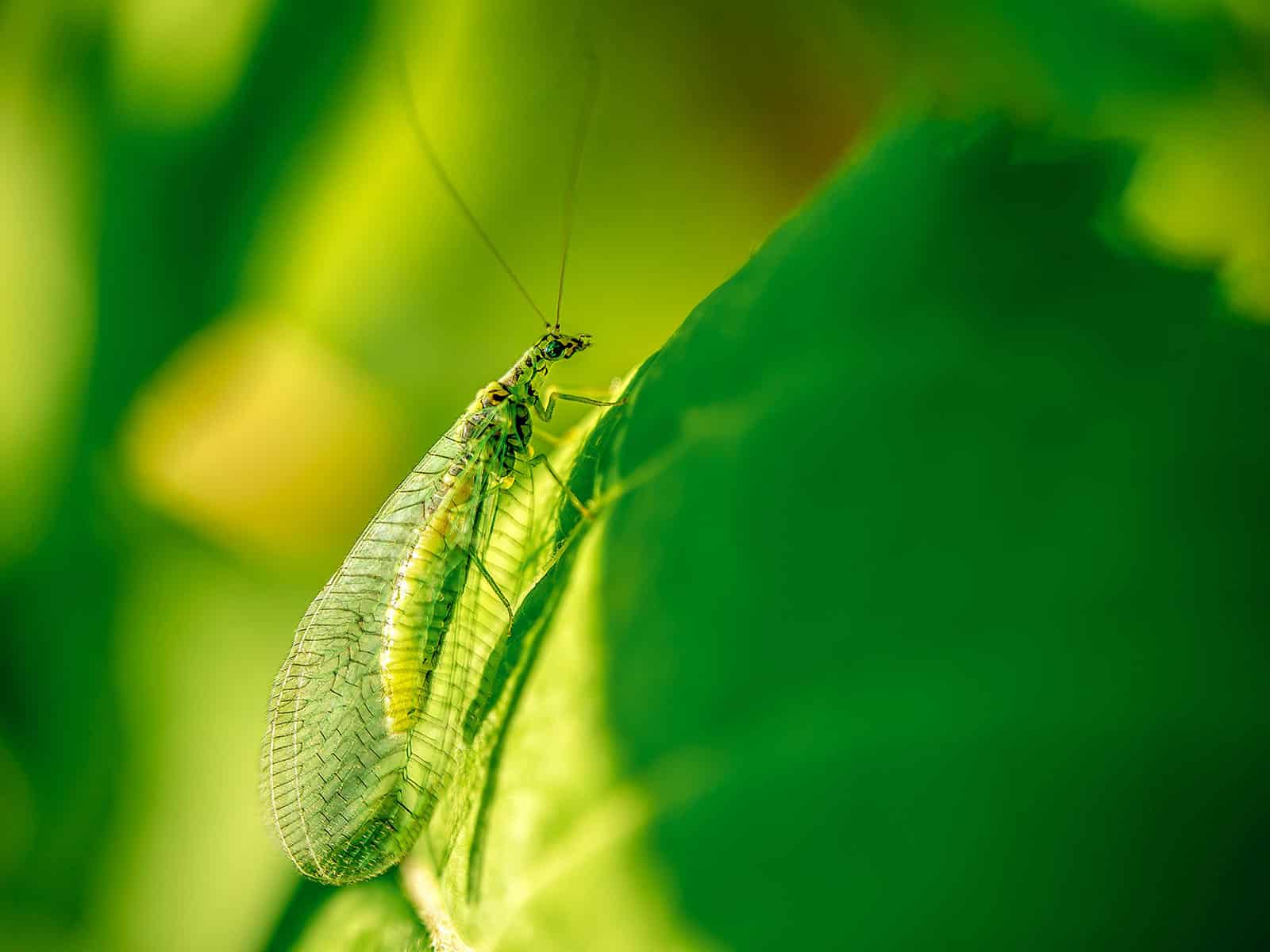
If you’ve ever released ladybugs only to have them fly away the next day, the good news is that you won’t have that problem with lacewings. As long as there’s enough food nearby to keep them satisfied, they’ll stick around and keep laying eggs.
Grow lots of flowers and lacewings will come
The best way to attract an abundance of lacewings to your garden is to grow an abundance of flowers that bloom from spring through fall when they’re active.
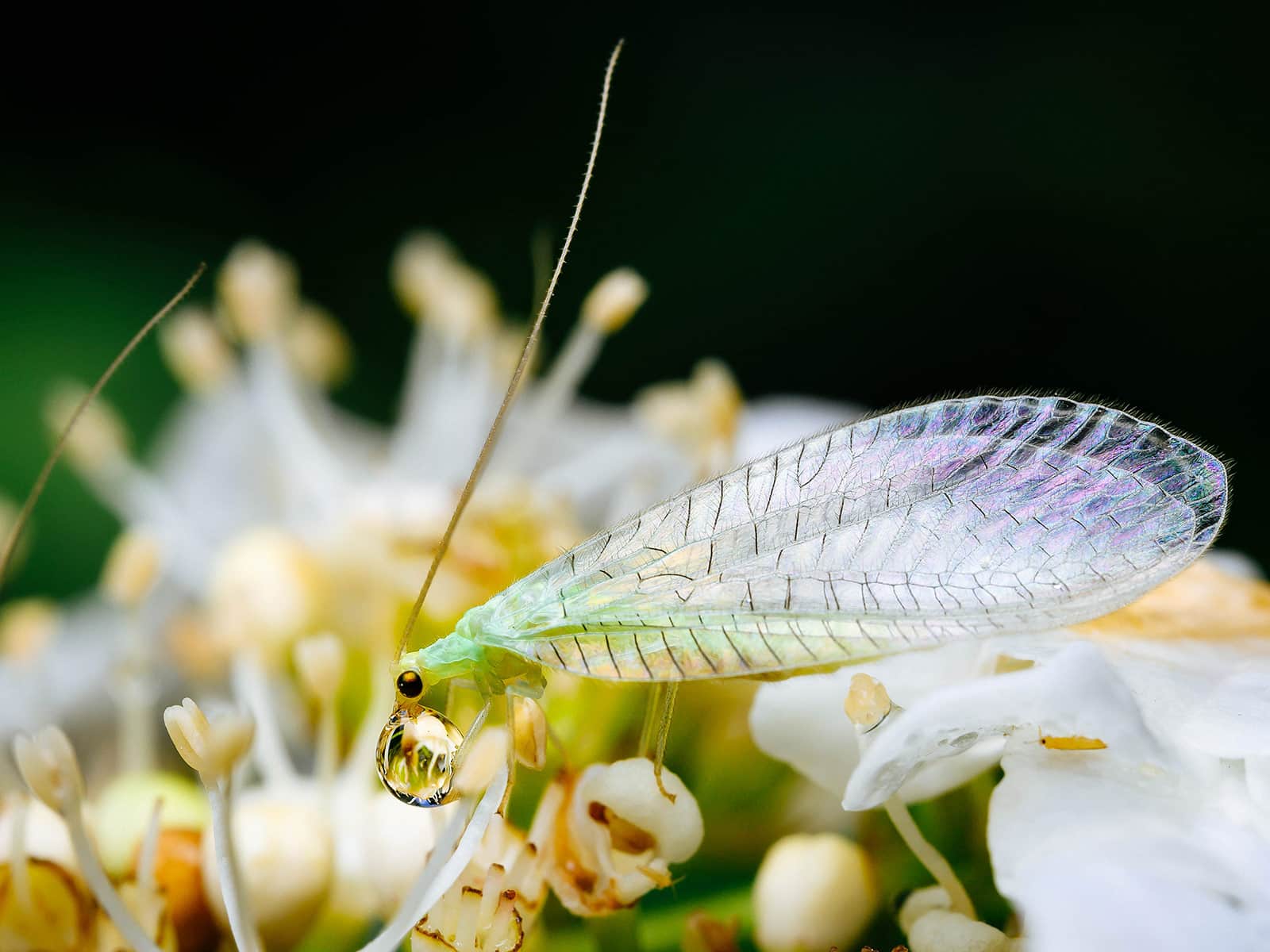
Lacewings love the nectar-rich Asteraceae family (such as coreopsis and sunflowers) and the Apiaceae family when it’s flowering (such as dill and parsley—which is all the more reason to allow your plants to bolt). They prefer simple flowers that have “landing pads” and easy access to nectar and pollen.
Lacewings actually love all the same flowers as most of the other beneficial insects in your garden, so if you already grow them for bees, hoverflies, and other pollinators, you’re all set.
What to grow for lacewings
An important thing to remember, when buying flowers from a nursery or starting them from seed, is to make sure they’re free of neonicotinoids. These systemic insecticides harm good bugs along with the bad ones, so double-check with the nursery or seed supplier that their plants and seeds have never been treated with neonics.
Disclosure: If you shop from my article or make a purchase through one of my links, I may receive commissions on some of the products I recommend.
Where to buy
Neonic-free flower seeds
Don’t keep your garden too tidy
Lacewing pupae overwinter in garden debris like loose bark and fallen leaves, so try not to clean up your garden too much in fall after everything has died back. (In fact, all that organic matter makes a great free mulch to protect the crowns and root systems of your perennials.) Leave all the debris in place until spring, when the lacewings hatch and can get straight to work on attacking your most damaging pests.
Speaking of which, keeping lacewings around means you also need to have a certain tolerance for some pests in your garden. This is their food source, and if you let the circle of life occur naturally, your insect ratio of good versus bad will balance itself. After all, there cannot be good bugs without the bad ones to keep them well fed!
Is it worth buying lacewings for your garden?
Lacewing eggs are readily available from many online suppliers, and since their flight is fluttery and weak as adults, they tend to stay in your garden.
That said, they’re also super easy to attract in the first place, so I personally don’t feel it’s necessary to buy lacewings for pest control. Use that money to grow more flowers for them instead, especially perennials and self-sowers that readily come back each spring.
Let dandelions and other weeds bloom as an early food source for newly emerged lacewings, and if you happen to find a stash of dainty lacewing eggs on your plants, consider yourself very lucky!
Read more: These common backyard weeds and invasive plants are actually edible


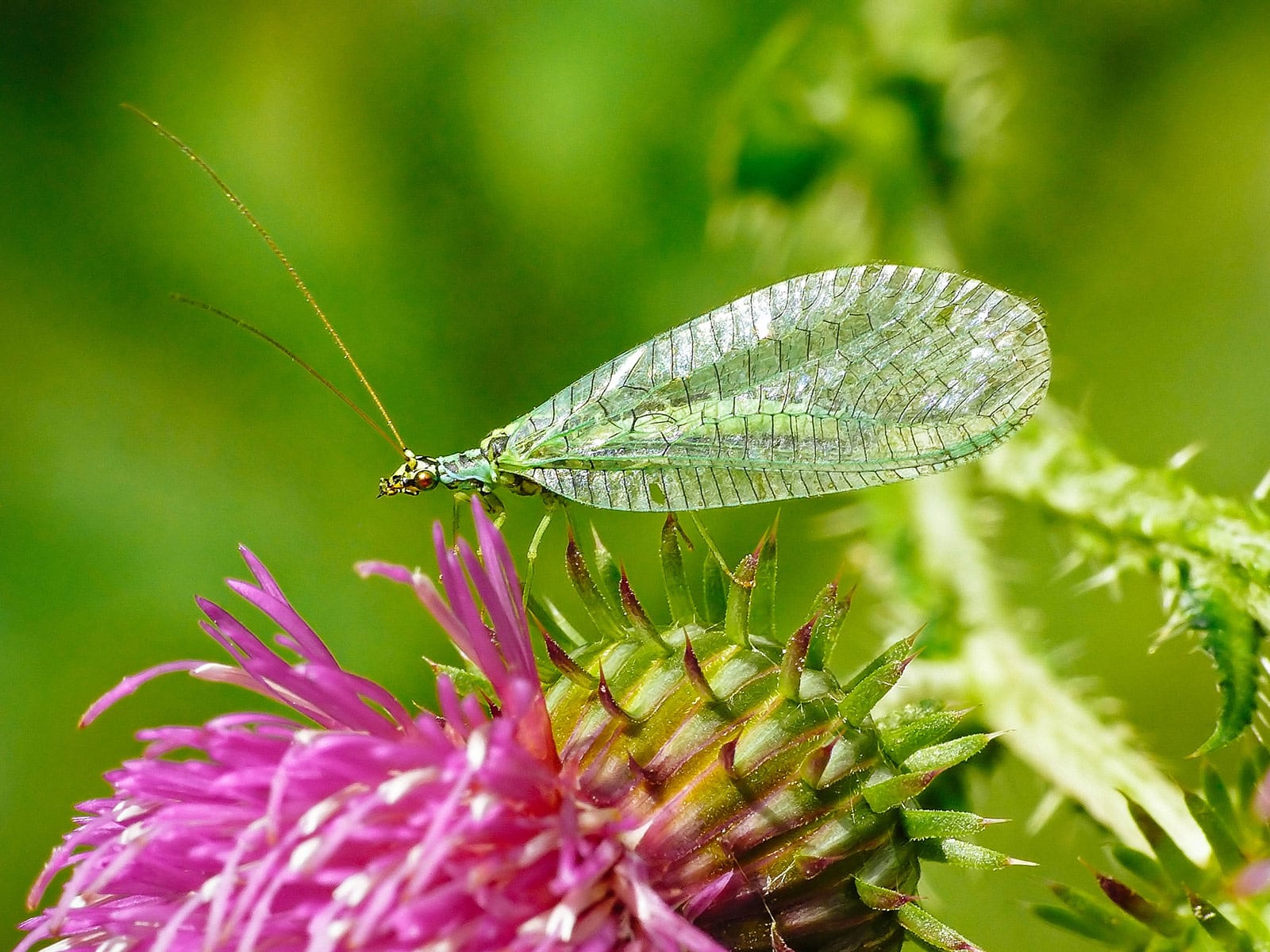

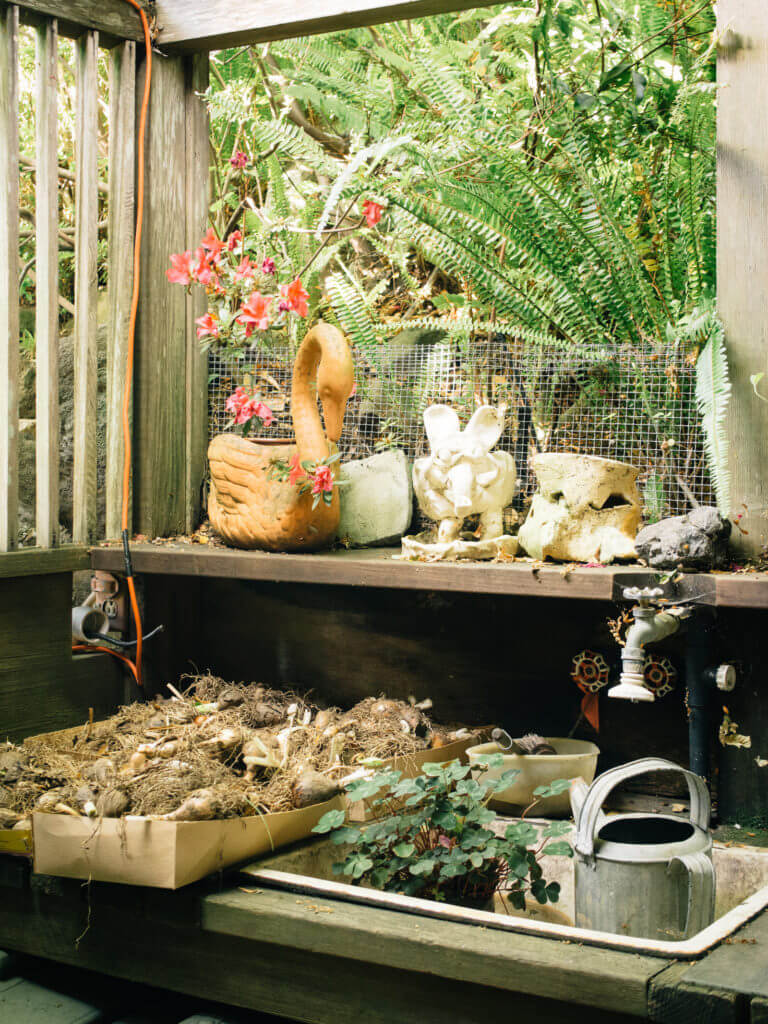

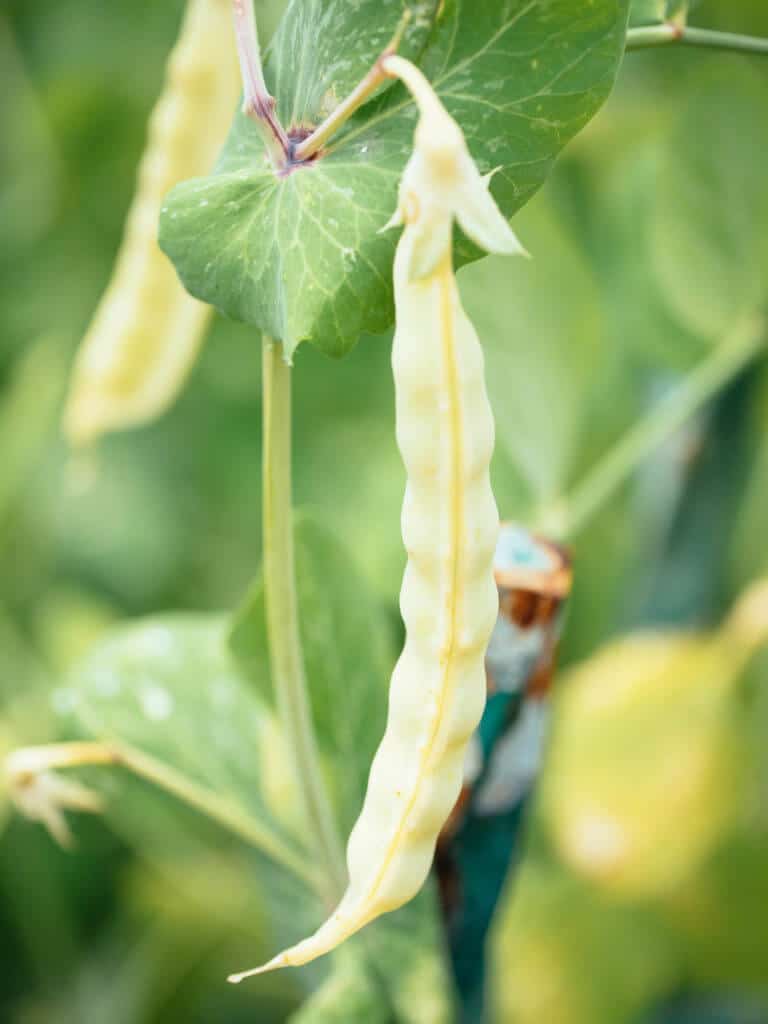





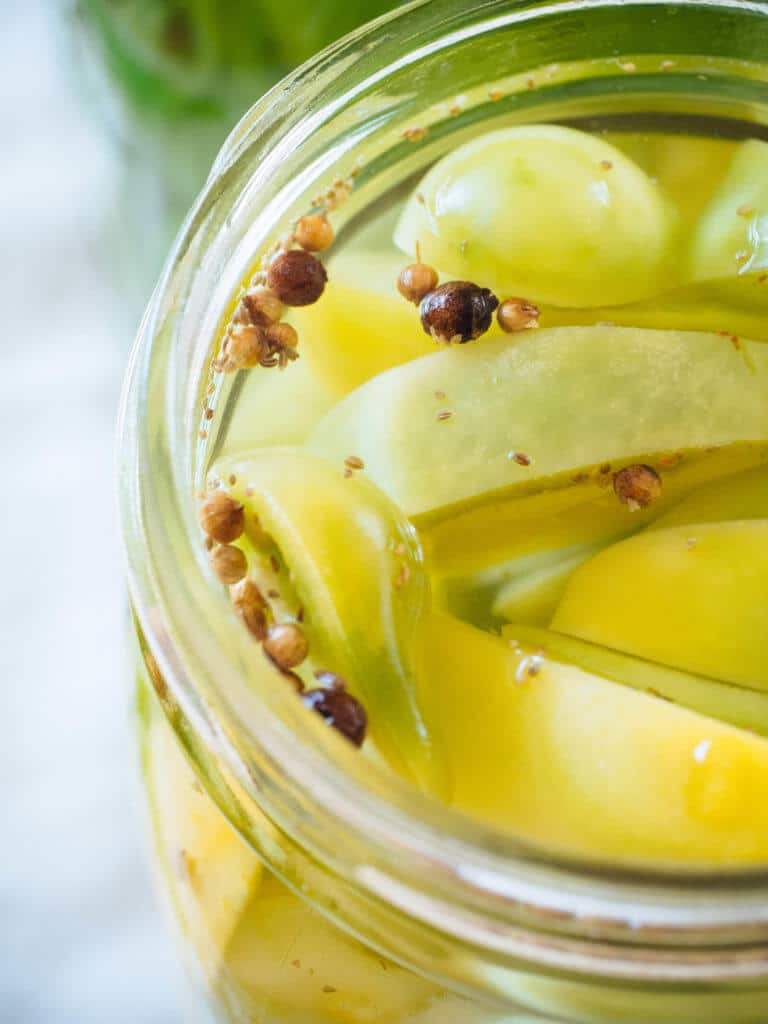



How door feel about praying mantis?
Praying mantids are good predatory insects to have around. As with all insects, balance is key. You need both good and bad bugs in a garden.